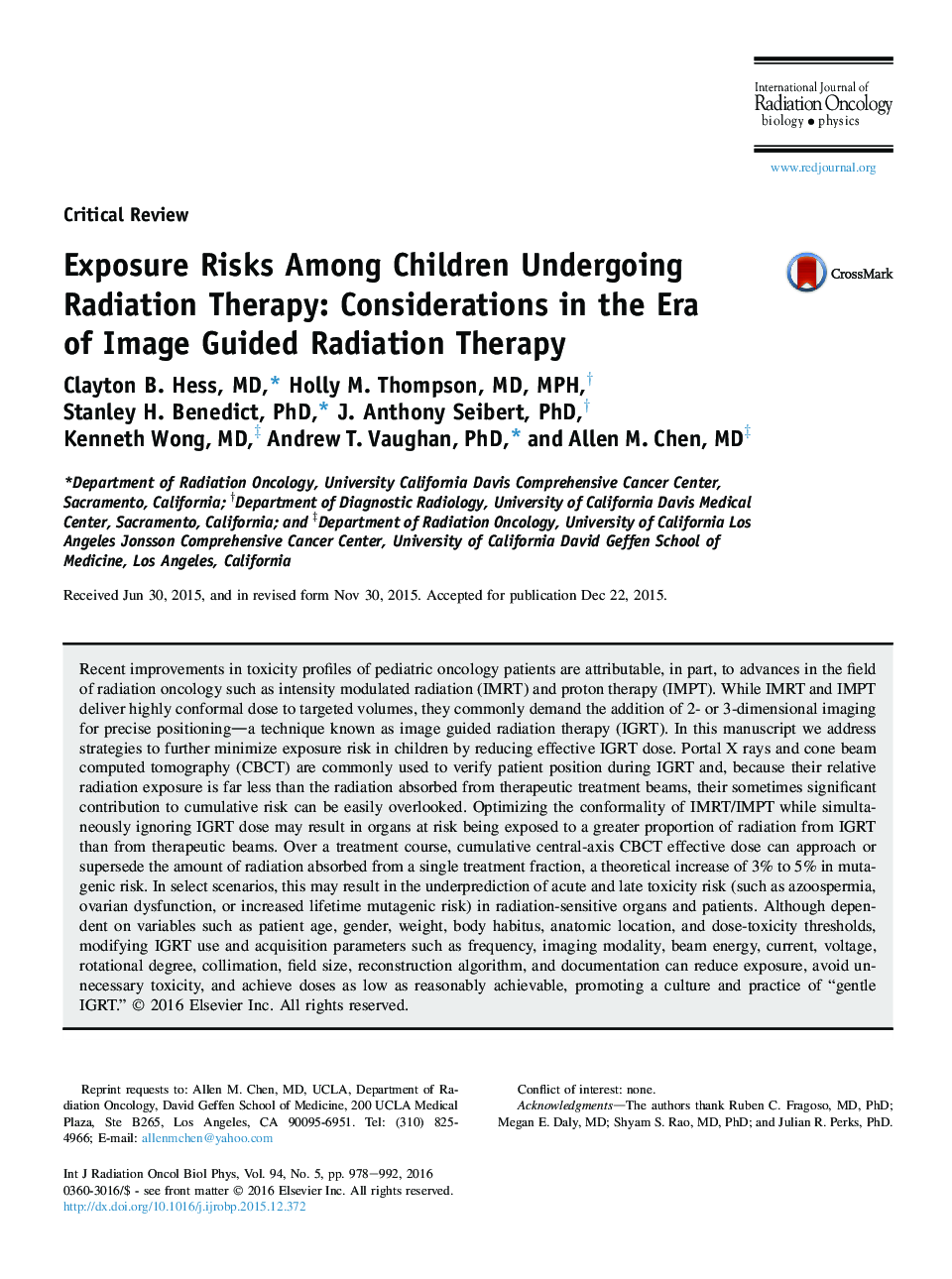| کد مقاله | کد نشریه | سال انتشار | مقاله انگلیسی | نسخه تمام متن |
|---|---|---|---|---|
| 8214710 | 1533010 | 2016 | 15 صفحه PDF | دانلود رایگان |
عنوان انگلیسی مقاله ISI
Exposure Risks Among Children Undergoing Radiation Therapy: Considerations in the Era of Image Guided Radiation Therapy
ترجمه فارسی عنوان
خطرات در معرض خطر در کودکان مبتلا به پرتودرمانی: ملاحظات در دوران درمان تصویر پرتو هدایت تصویر
دانلود مقاله + سفارش ترجمه
دانلود مقاله ISI انگلیسی
رایگان برای ایرانیان
موضوعات مرتبط
مهندسی و علوم پایه
فیزیک و نجوم
تشعشع
چکیده انگلیسی
Recent improvements in toxicity profiles of pediatric oncology patients are attributable, in part, to advances in the field of radiation oncology such as intensity modulated radiation (IMRT) and proton therapy (IMPT). While IMRT and IMPT deliver highly conformal dose to targeted volumes, they commonly demand the addition of 2- or 3-dimensional imaging for precise positioning-a technique known as image guided radiation therapy (IGRT). In this manuscript we address strategies to further minimize exposure risk in children by reducing effective IGRT dose. Portal X rays and cone beam computed tomography (CBCT) are commonly used to verify patient position during IGRT and, because their relative radiation exposure is far less than the radiation absorbed from therapeutic treatment beams, their sometimes significant contribution to cumulative risk can be easily overlooked. Optimizing the conformality of IMRT/IMPT while simultaneously ignoring IGRT dose may result in organs at risk being exposed to a greater proportion of radiation from IGRT than from therapeutic beams. Over a treatment course, cumulative central-axis CBCT effective dose can approach or supersede the amount of radiation absorbed from a single treatment fraction, a theoretical increase of 3% to 5% in mutagenic risk. In select scenarios, this may result in the underprediction of acute and late toxicity risk (such as azoospermia, ovarian dysfunction, or increased lifetime mutagenic risk) in radiation-sensitive organs and patients. Although dependent on variables such as patient age, gender, weight, body habitus, anatomic location, and dose-toxicity thresholds, modifying IGRT use and acquisition parameters such as frequency, imaging modality, beam energy, current, voltage, rotational degree, collimation, field size, reconstruction algorithm, and documentation can reduce exposure, avoid unnecessary toxicity, and achieve doses as low as reasonably achievable, promoting a culture and practice of “gentle IGRT.”
ناشر
Database: Elsevier - ScienceDirect (ساینس دایرکت)
Journal: International Journal of Radiation Oncology*Biology*Physics - Volume 94, Issue 5, 1 April 2016, Pages 978-992
Journal: International Journal of Radiation Oncology*Biology*Physics - Volume 94, Issue 5, 1 April 2016, Pages 978-992
نویسندگان
Clayton B. MD, Holly M. MD, MPH, Stanley H. PhD, J. Anthony PhD, Kenneth MD, Andrew T. PhD, Allen M. MD,
